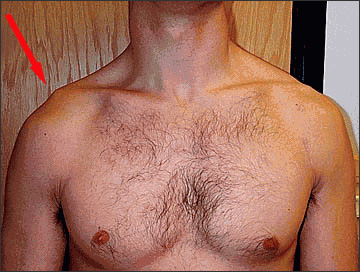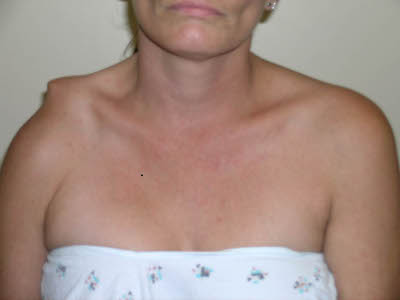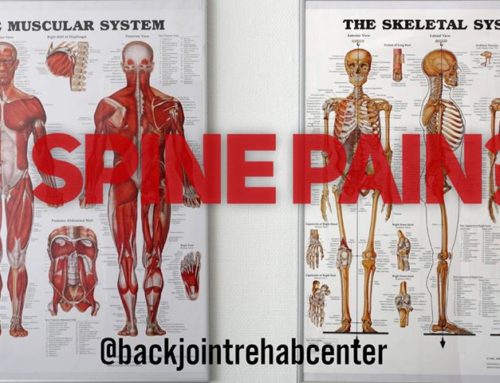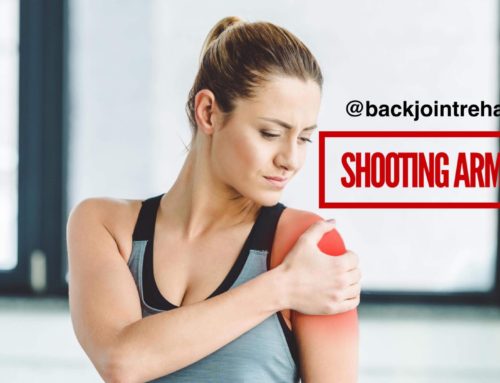PART 4: SEPARATED SHOULDER
In the Fourth Part of the Shoulder Series, we discuss the pain and problems associated with a “Separated Shoulder” aka an AC Joint Separation. This article will help you identify characteristics associated with AC Joint Separation so you can begin correcting the problem.
You may have heard the expression, “I separated my shoulder” and wondered what exactly that meant. We commonly hear someone say that they separated their shoulder, but always wonder, “what’s going on with the shoulder?”
What Does a Separated Shoulder Mean?
A separated shoulder is a common saying when referring to an injury to the joint between the clavicle and shoulder blade. The front part of the shoulder blade has a little bony area called the acromion process. The lateral end of the clavicle meets the acromion process and forms the AC (Acromioclavicular) Joint. An AC Joint Separation is what is described when you hear “separated shoulder”. The “shoulder separation” is not a true injury to the shoulder joint itself, rather a joint near the shoulder.
The severity of the AC joint separation is reflected in extent of the damage to the ligaments that surround the AC joint. Typically, injuries that lead to a AC joint separation occur in active individuals who experience a direct blow or fall to the shoulder affecting the ligaments that stabilize the AC joint. The greater the damage to the ligaments, the worse the injury. These AC injuries can range from little change to significant visible deformities becoming quite painful and limiting.
These individuals range from mild to severe injuries of the AC joint. As you can see the deformity, the clavicle becomes separated from the acromion process (shoulder blade); hence the term “separated shoulder”.
There are several classification systems that are used to interpret AC joint injuries. The more common are Allman, Tossy, and Rockwood Classifications Systems. The Allman and Tossy utilize Grade levels 1-3 for AC joint injury interpretation. Rockwell utilizes Type 1-6. Allman & Tossy are more commonly utilized, as the injuries that occur in Grade 1 – 3, & Type 1- 3, are more common. Injuries to the AC joint that involve Type 4-6, are rare, but do occur with specific regards to the clavicle displacement and muscle tears. We will describe the more common forms of AC joint separation, Grades 1-3.
GRADE 1
This is a mild sprain to the AC (Acromioclavicular) Ligament. It appears normal in a physical examination (aside from pain) and imaging such as X ray. After an acute injury, an MRI may reveal edema near the area of injury, but the extent of damage to the ligaments will be considered intact and within normal limits. Pain may be associated with Grade 1 limiting shoulder motion, activities, and affect strength. A mild deformity or no deformity may be seen.
GRADE 2
A more severe injury is a Grade 2 AC Joint Separation that may involve more than 1 ligament of the AC joint. The AC Ligament will have slight tears and the injury may include tears to the CC (Coracoclavicular) Ligament. Symptoms of pain may be more evident with lesser straining activities; most overhead activities will produce pain or feelings of weakness/instability. A visible mild to moderate deformity will be seen.
GRADE 3
The most severe AC joint separation is complete tears of both the AC and CC Ligaments. This will create a significant visible deformity. Pain, weakness/instability, and a limited range of motion will be evident along with a deviated pathway of movement of the shoulder complex. It will not be a true loss of range of motion, rather a loss of motion attributed to the inability to stabilize properly to move through an arc during the movement.
TREATMENT
Most cases will resolve with non-surgical treatments. There will be few severe cases that require surgery to stabilize the AC Joint and re-position the displaced clavicle, or torn muscles. Again, severe cases are rare. Most individuals will return to their recreational activities without pain and limitations regardless of the deformity. When treatment is ignored or overlooked, abnormal contact occurs during shoulder movement developing poor mechanics and accelerating “wear & tear” (degeneration) of the shoulder complex. This will create early arthritic symptoms.
Treatment involves various facets that include range of motion, strength development, stability, and corrective loading strategies to improve motor control of the shoulder complex. Proper movement of the shoulder complex provides rehabilitative & preventative measures. Initial injuries usually require, immobilization, usually a sling for 1-2 weeks, followed by temporary pain reducers, such as ice and anti- inflammatories. After inflammation subsides, it is extremely important to begin rehabilitation for the AC joint separation to avoid prolonged problems of pain and limitations.
If you or someone you know has suffered a Separated Shoulder or other shoulder problems, please give us a call. We help people who suffer from all types of physical injuries.
We are Dedicated to Get You Better Through Movement…
For Appointments Call (219)-310-8822
Dr. Artemio Del Real DC, Cert. MDT, CSCS






![PART 3: SHOULDER SERIES – 5 MOST COMMON DIAGNOSIS [SHOULDER TENDINITIS]](https://backjointcenter.com/wp-content/uploads/2017/02/volleyball-1396926_960_720-500x383.jpg)
![Runners Series: 7 Most Common Injuries to Avoid…[PART 6]](https://backjointcenter.com/wp-content/uploads/2017/01/shin-500x383.jpg)